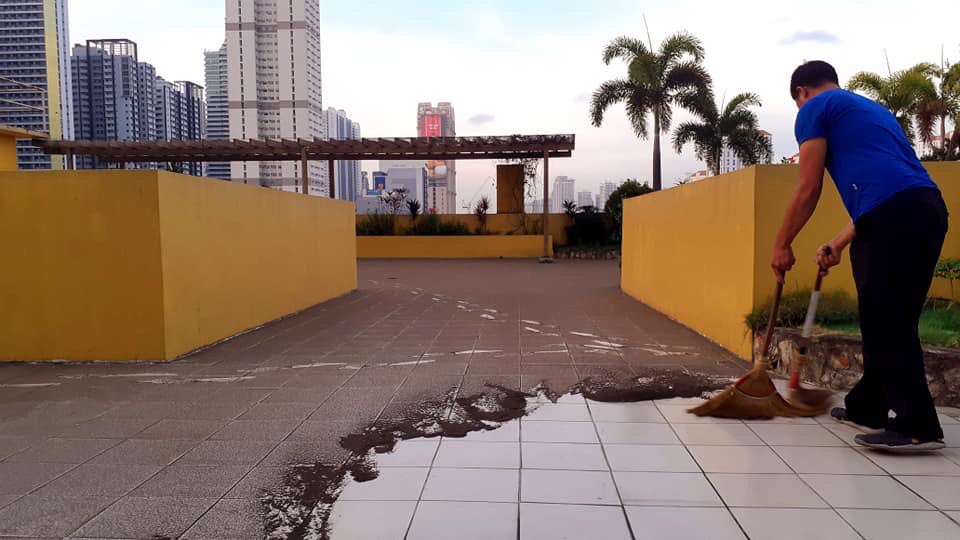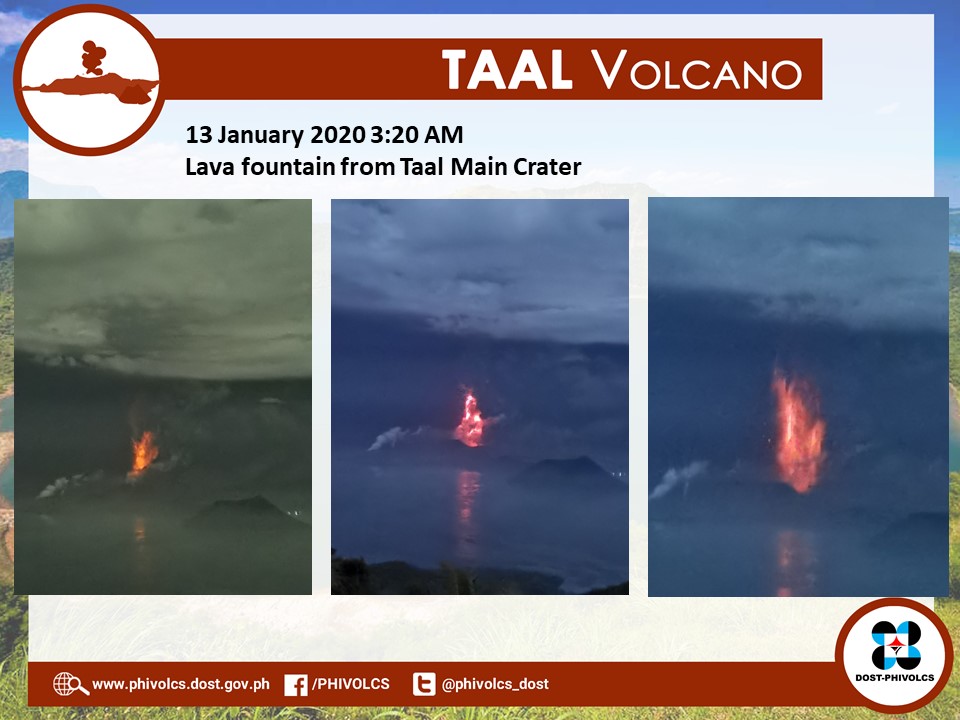Taal Volcano in Talisay, Batangas spewed lava fountain from its main crater early Monday morning, as captured by Philippine Institute of Volcanology and Seismology (Phivolcs).
In its latest eruption update, Phivolcs said that the lava fountain was recorded 3:20 AM of Monday, January 13.
Department of Science and Technology – Phivolcs has raised Alert Level 4 after Taal Volcano started belching heavy and prolonged ashfall Sunday afternoon.
The latest update showed that ashfall from the ongoing eruption of Taal has reportedly fallen in the following areas: Tanauan, Batangas; Escala, Tagaytay; Sta. Rosa, Laguna; Dasmariñas, Bacoor, Silang, Cavite; Malolos, San Jose Del Monte, Meycauayan, Bulacan; Antipolo, Rizal; Muntinlupa, Las Piñas, Marikina, Parañaque, Pasig, Quezon City, Mandaluyong, San Juan, Manila, Makati City, and Taguig City.
There are also larger particles called lapilli measuring 2 to 64 millimeters in diameter falling in the areas of Tanauan, Talisay, Batangas; Tagaytay City; Nuvali and Sta. Rosa, Laguna.
Phivolcs warns that fine ashfall can cause irritation and breathing problems especially among elderly and children and it is particularly dangerous to our health. In addition, areas of ashfall have also experienced sulfurous smell which can also cause irritation. Affected populations are advised to protect their mouths and noses using N95 grade facemasks or wet cloth or towel. Motorists are advised to drive with extreme caution as wet ash can cause poor visibility and, when wet, can make roads slippery.

The Philippine Seismic Network has recorded a total of 52 volcanic earthquakes in the Taal region as of 12:49 AM, January 13, 2020. Twenty-six (26) of these earthquakes were felt with intensities ranging from Intensity II – V in Tagaytay City, Cabuyao, Laguna, Talisay, Alitagtag, Lemery, and Bauan, Batangas. Such intense seismic activity probably signifies continuous magma intrusion beneath the Taal edifice, which may lead to further eruptive activity.
DOST-PHIVOLCS strongly reiterates the total evacuation of the Volcano Island and high-risk areas within the 14-kilometer radius from the Taal Main Crater. Areas in the general north are advised to guard against the effects of heavy and prolonged ashfall. Civil aviation authorities must advise aircraft to avoid the airspace around Taal Volcano as airborne ash and ballistic fragments from the eruption column pose hazards to aircraft. DOST-PHIVOLCS is continually monitoring the eruption and will update all stakeholders of further developments.”
Class Suspensions in Affected Areas
Executive Secretary Salvador Medialdea has directed the suspension of classes in all levels and work in government in the affected areas of Calabarzon, NCR and Region 3, except frontline response agencies involved in disaster response, delivery of basic and health service, and/or other vital services.
The private sector is also highly encouraged to suspend work for the safety of their employees.(Source: PHIVOLCS-DOST)



